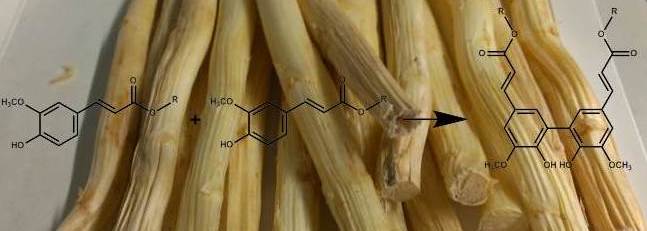Cell Wall Cross-Links

The individual cell wall polymers are cross-linked by non-covalent interactions and covalent linkages contributing to the insolubility and strength of the cell wall. Good examples for non-covalent interactions are hydrogen bonding between cellulose microfibrils and matrix hemicelluloses. Also, divalent cations such as calcium can cross-link homogalacturonans via electrostatic interactions between adjacent carboxyl groups, a mechanism which is also used in food products to produce pectin gels in low-sugar products. Our main focus regarding cell-wall cross-links is on covalent linkages formed by oxidative coupling of phenolic cell wall compounds such as hydroxycinnamates. Arabinoxylans from monocotyledonous plants such as cereals and pectins from several plants (especially those which belong to the family of Amaranthaceae) are acylated with ferulic acid and, partially, p-coumaric acid. By oxidative coupling, these ferulates can form oligomers such as dimers, trimers, and tetramers, potentially cross-linking up to four polysaccharide chains. Besides their impact on the cell wall, polysaccharide cross-linking through ferulate oligomers is an important mechanism of gel formation, and both the ferulate (and other hydroxycinnamate) monomers and oligomers were suggested to contribute to the health benefits of cereal grains and cereal grain dietary fiber. Our ongoing research is focused on the structural characterization of hydroxycinnamoylated polysaccharides, the identification and localization of hydroxycinnamate oligomers, their functions in plant physiology, their potential health benefits, and their microbial transformation. We have developed several methodologies to analyze hydroxycinnamate oligomers in the past and strive to optimize our analytical approaches to maximize both information on individual regiosiomers of ferulate (and other hydroxycinnamate) dimers, trimers, and tetramers and sample throughput.
